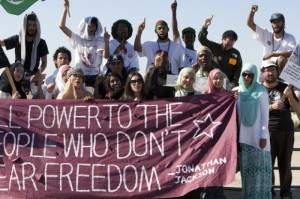Prison Hunger Strike Against Endless Solitary Detention
Jul 25, 2013
Posted in Equal Rights/Equity, Police-Public Safety
By Jaron K. Epstein
The treatment of prisoners in the U.S. has continued to worsen with the widespread placement of thousands of inmates in indefinite solitary detention is what is known as the SHU or Security Housing Unit policy.
Beginning last year, prisoners in California went on a hunger strike in protest to the horrendous conditions they are subjected to. Despite promises of prison officials to improve conditions, California inmates – now grown to 30,000 strong – recently renewed their statewide hunger strike and are calling on officials to sit down negotiate inmate demands,

A key demand is to end of group punishment and administrative abuse. When inmates participate in a work strike or a hunger strike, they are individually punished by issuing a Rule Violation Report (RVR).
These RVRs are used to keep prisoners held in solitary confinement indefinitely as well as restricting other rights such as having visitors or making phone calls.
Another of the demands is to abolish the system’s debriefing policy and to modify active/inactive gang status criteria. Debriefing is where inmates must provide information about other prisoners in order to gain release from solitary confinement.
At present, prisoners may be labeled as gang members and placed in solitary based on the slightest reason, including talking to someone in the yard, a tattoo, a book that is read or a comment in a letter.
The outcome of the Castillo v Alameida settlement restricts the proof of gang membership to the use of photographs for association. But currently inmates are contesting that prison staff does not follow the decision made in the settlement.
In 2006, the U.S. Commission on Safety and Abuse in America Prisons issued recommendations saying there should be an end to conditions of isolation.
Among the recommendations are that segregation should only be used as a last resort. A more productive form of confinement would be to allow prisoners in isolation the possibility of engaging in meaningful work, education and religion, which would give them a sense of connection to a community.
Also included in the recommendations is the call for an end to the practice of long-term solitary confinement, which means releasing prisoners into the general population who have already been held in solitary continuously for the past 10 to 40 years.